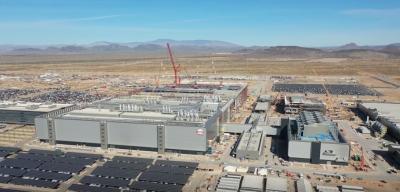This is the “summer of discontent” in the form of financial stress for many contractors and dealers.
The cost of diesel fuel is at a record level, increasing the expense of running equipment.
The producer price index (PPI) for highway and street materials like asphalt is up approximately 8 percent from last year instead of the usual average increase of approximately 1.8 percent. Increasing prices have often caused havoc among contractors who bid materials costs at much-lower levels than they later have to pay.
The long delay in passing a new six-year transportation bill has caused malaise and uncertainty. While construction of highways and bridges continues at a fast pace, much of the work has been short-term because state departments of transportation have not been able to fund longer-term projects.
Diesel Prices
As of July 11, diesel fuel cost an average of $2.41 per gallon in the United States, approximately four cents a gallon more than gasoline, which is usually higher than diesel in the summer months. The Bureau of Labor Statistics (BLS) reported on July 15 that record diesel prices are 64 cents a gallon more than 12 months ago.
“Not only does higher diesel directly increase contractor costs of running equipment, but there’s also an indirect effect,” said William Buechner, vice president of economics and research of the American Road and Transportation Builders Association (ARTBA) in Washington, D.C.
“It results from the higher cost of crude oil, which is about $56 a barrel or $1.25 a gallon. Materials like asphalt and aggregate, which are made from crude oil byproducts, are going up significantly.”
Kenneth Simonson, chief economist of the Associated General Contractors of America (AGC) in Washington said contractors have a right to be concerned.
“I think diesel prices, including the ever-escalating fuel surcharges which they have to pay for deliveries of materials, are a major concern for many types of contractors,” he said.
“These prices are absolutely a strain on contractor budgets. I don’t think that anyone who bid a job a year ago, when diesel prices were already at an extremely high level in historical terms at $1.74 a gallon, envisaged adding another 64 cents to the bid.”
High diesel also increases dealer costs.
Jim Casendino, equipment manager of Binder Machinery Co. in South Plainfield, NJ, said, “rising costs of diesel fuel affect our trucking costs for bringing equipment to customers; while a machine used to cost $400 to move, it’s now close to $500.”
Likewise, Casendino added, “while road mechanic costs used to be $10 a mile, now this cost is $20 a mile.”
Difficult Times
“This is a very difficult time for contractors right now,” said Bob Bryant, executive director of the Utility and Transportation Contractors Association of New Jersey (UTCA) in Wall, NJ.
“It’s comparable to 1989 to 1990 when a lot of private development came to a halt as the federal government was pulling in the reins on projects. After weathering cost increases in steel and concrete, and a very difficult, tight, market last year, now we have diesel fuel increases this year. Contractors going into this period right now have already been weakened substantially. We have been experiencing more frequent bankruptcies than anytime in the last 10 years.”
Bryant said the building climate, is “very competitive, with contractors under a lot of stress and not a lot of profit margins, if any.
“It’s very difficult to absorb price increases when there’s not a lot of profit to start with,” he continued. “Though our state DOT has a price escalation clause, work for counties and municipalities typically doesn’t have such a clause [which reimburses contractors if prices rise, or owners if prices fall].”
Dramatic Increase in Producer Price Index
ARTBA’s Buechner pointed out the PPI for highway and street materials, “is up pretty substantially from last year, and is on track for about an 8 percent increase this year.”
In its July 15 report, the BLS said the largest price increases in construction materials over the past 12 months were in diesel fuel (64 percent), gypsum products (13 percent) and cement (12 percent).
The BLS reported earlier that the PPI for asphalt paving materials rose 4 percent in 2004 and has been rising at a rate of 11 percent in 2005, while the PPI for ready-mix concrete increased 8 percent in 2004 and is rising at a rate of 23 percent in 2005 and the PPI for crushed stone increased 4 percent in 2004 and is rising at a 30 percent rate this year.
“These price increases are probably causing a lot of headaches for people, particularly contractors who took projects back when prices were a lot lower and now have to eat the price increases,” Buechner said.
“For about a dozen years before 2004, the basic PPI for highway projects increased about 1.8 percent a year. In 2004, it increased 8.5 percent. We’re looking at a couple of years [2004 and 2005], which are way out of line with what the historical experience has been.”
AGC’s Simonson pointed out that “in general, construction costs have risen much faster in the past two years than the overall PPI or consumer price index [CPI].”
Tough on State Budgets
Rising material prices also wreak havoc with state budgets.
“Bids are coming in above what our highway engineers had estimated,” said Carol Mellind, a spokesperson of the West Virginia Division of Highways.
“We have only so much money for routine maintenance. Asphalt prices are higher than usual, and we’ll have to stop when we get to the end of the allotted funding.
“It hasn’t happened yet, however. We recently awarded about 61 more miles of resurfacing.”
Commented Mike Martin, senior ARTBA economist: “Sometimes states will open bids and find they are 50 percent higher than was expected. DOTs may then drop the project or try to reform it. It’s all very disruptive of the contract awarding process.”
Cement Prices Rising
“Cement prices continue to be a concern,” said Simonson. “The U.S. Geological Survey reported on July 15 that imports increased 28 percent in January to April 2005, compared to the same months of 2004, while U.S. production slipped 1 percent and consumption rose 5 percent. The Portland Cement Association and AGC have separately received reports of shortages in part or all of 28 states plus the District of Columbia, up from 23 states in May.”
Simonson said that, while the value of construction business remains “pretty strong and pretty well distributed among construction segments, there are increasing cost pressures, unpredictable cost pressures, which make this time especially stressful.
“There is a heads side and a tails side. Fortunately, on the heads side, steel prices by all accounts have tailed off amid a general sigh of relief. The tails side is that cement problems are cropping up even earlier this year and threatening to get worse than they were last year. The basic issue is that no one wants cement plants in their back yard, so cement capacity has been growing very slowly while demand has been racing ahead for the past few years because of the strong demand for residential and non-residential construction.”
That’s forcing more contractors to look beyond the nation’s borders for supplies.
“This year, [cement production] capacity is expanding very slowly and demand is rising more rapidly. We are ever more dependent on imports,” he said. “Last year, [cement] import dependence rose from 20 percent to 23 percent of total consumption. The one material, which could cause project delays, is shortage of cement in some parts of the country. Cement is not a very mobile commodity. Some areas are close to supply; others, like Florida, some parts of Texas, Northern Idaho and Eastern Washington, are having a tough time.”
Simonson said that, while steel prices are no longer a big issue, “the flip side of this is that, with the strong demand for construction steel, prices have not come back down the way they have for some other categories of steel; however, steel is in abundant supply and the price is down a little bit from a year ago.”
Highway Uncertainties
A new six-year highway and surface transportation bill has been in House/Senate conference committee. Until a new law is passed, uncertainties plague contractors and state DOTs.
“Funding bills still being worked on have been a long-time problem,” said Ed Nyland, president of business development of George Harms Construction Co. Inc. in Howell, NJ. “We also have problems with our state transportation trust fund, and with rising diesel prices.”
New Jersey UTCA’s Bob Bryant said lack of a new transportation bill “has put tremendous pressures on state DOTs, with restrictions on getting multi-year projects out because there has been no stable funding.”
Bryant said New Jersey has a real problem with its own transportation trust fund, which will be out of money at the end of the current fiscal year on June 30, 2006.
“About $805 million of annual revenue will be used to pay off the debt until 2022,” he said.
This revenue, which has previously gone into the trust fund, comes from the gasoline tax, the petroleum gross receipts tax and the first $200 million from the sales tax on new automobiles.
Said ARTBA’s Buechner: “Once a new federal bill is passed, things will get a lot healthier. The fact is, the value of construction put in place keeps increasing month to month and year to year, so work is getting done.”
Nominal funding for highway projects would grow 4.1 percent a year under the Bush Administration’s $284-billion highway and transit proposal, but only 1.1 percent per year after inflation. CEG
Today's top stories















